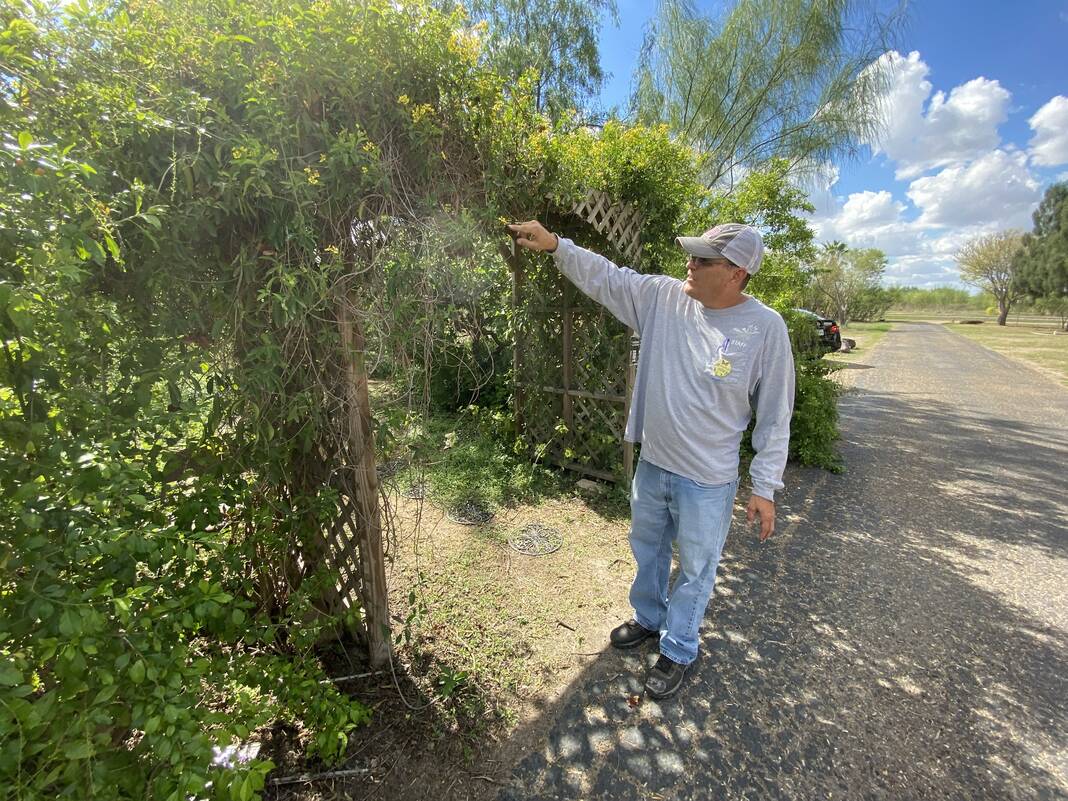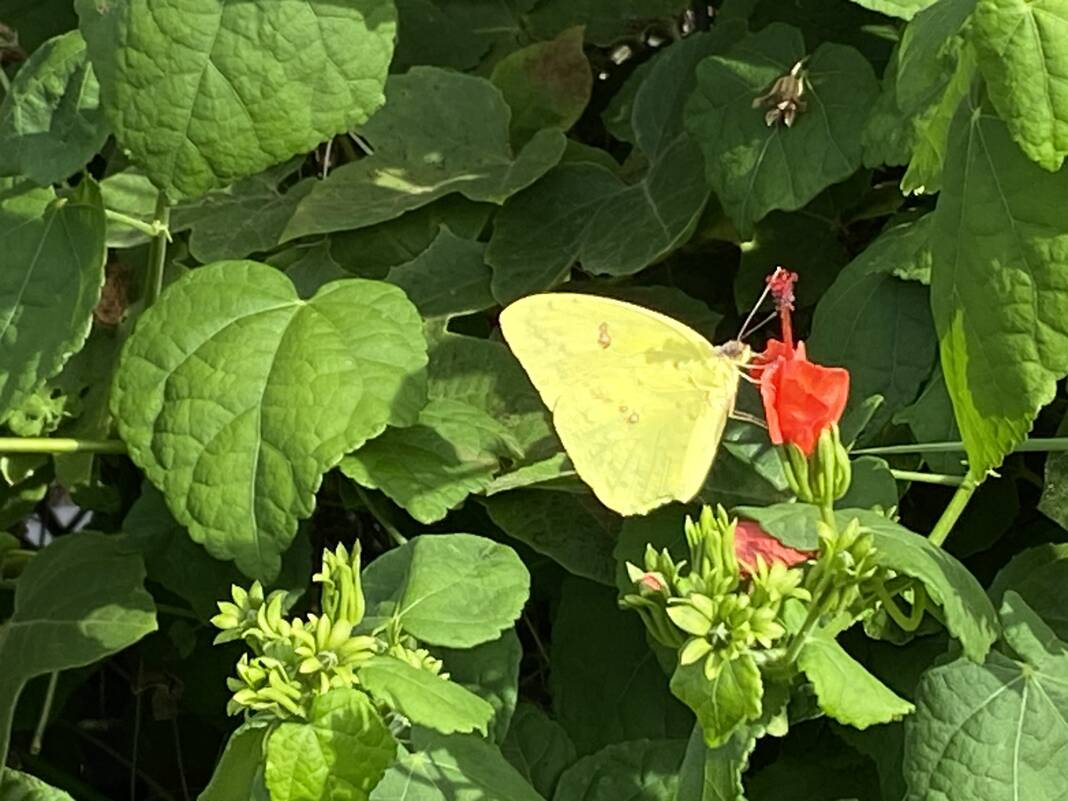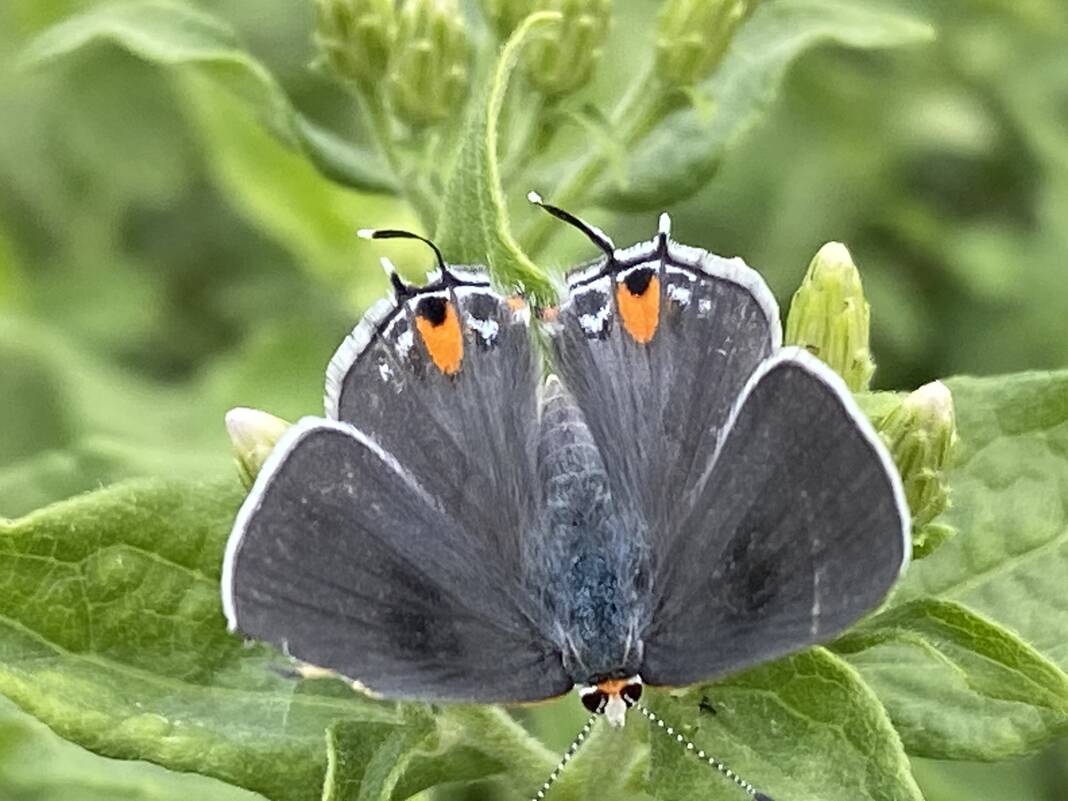|
Only have a minute? Listen instead
Getting your Trinity Audio player ready...
|

MISSION — Goldenrods thick with yellow blooms in the sun stand tall above their beds bordered with landscape timber.
Queen butterflies crowd mistflower and crucitas busting beyond the railroad ties along pathways where visitors enjoy Community Day at the National Butterfly Festival.
It was the first day of the Texas Butterfly Festival, or perhaps the kickoff for the three-day event which in which nature lovers went on tours throughout the Valley.
While the festival is a visible event that highlights the importance of butterflies and the beauty of those butterflies and their important part of the food chain, a much deeper reality is the planting and the maintenance of those gardens.
With the changing of the landscape and the rearranging of things and the expansion of farmlands and the cities, the creation of urban habitats have taken on a more vital importance. Aside from the preservation of a species and its right to exist in perpetuity, butterflies play a crucial role in the food chain.
Butterflies and caterpillars are an important food source for frogs and lizards and other animals; butterflies carry pollen on their legs from flower to flower, ensuring that plants continue to produce fruits and vegetables.
For this reason, numerous organizations and individuals promote the creation of butterfly gardens for the enjoyment of visitors and the continuance of the species.
Of crucial importance is the inclusion of host plants along with nectar plants. Butterflies drink nectar from flowers and they lay their eggs on host plants. Of particular interest is the planting of milkweed to serve as host plants for the monarchs, soldiers and queens. Another host plant can be the passion vine for gulf fritillaries, citrus trees for giant swallowtails, and the native ruellia for the malachite butterfly.
“You want to get the native ruellia and not the Mexican ruellia,” said Bianca Banda, interpreter at Bentsen-Rio Grande Valley State Park.

“The Mexican ruellia grows really tall and gangly,” Banda said. “It’s a lot more difficult to manage. So if you’re trying to make the most of your space I wouldn’t put that.”
Those planting butterfly gardens may also consider the use of borders such as landscape timber, railroad ties, or blocks. Some recommend raised gardens between 6 and 12 inches while others stating such extra work is unnecessary. Borders can be used for both raised gardens and those at ground level.
Raised gardens between 6 and 12 inches can provide better drainage in areas prone to flooding, which can deprive roots of oxygen, said Seth Welliver, executive director of the Butterfly Garden at Oleander Acres RV Resort in Mission. He referred to an online article in “Fine Gardening” which states that raised beds offer better drainage in areas with clay soils, warmer soil, and less human intrusion.
Banda said either way — raised or inground — are fine as did Javier Gonzalez, naturalist and educator at the South Padre Island World Birding Center.
A butterfly garden can be a rectangle or a triangle or a square.
“The smallest I would go would be 4 by 4,” Banda said. “And the biggest I would go would be 6 by 6.”
A walk through the grounds of the National Butterfly Center reveals a variety of shapes and sizes. Landscape timbers form triangle beds which enclose thick patches of both mistflower and Zizote, a native milkweed. Larger railroad ties hold a sort of commanding presence at the larger beds.

A bed should have a mix of host plants and nectar plants, Banda said.
“I would say crowd them,” she said. “I see better results from plants that are mixed together, crowded together. You don’t end up having the plant completely eaten and you still get butterflies. Mistflower will end up taking over everything if you’re not careful.”
While tropical milkweeds are more colorful than the native zizotes, they don’t handle the local conditions well, Welliver said.
“Native zizotes milkweed is better adapted to our area, tolerates drought, hot and cold weather, plus it’s much longer lived than tropical milkweed.,” he said.
Cheryl Brummett, a member of the Rio Grande Valley Pollinator Project, says that zizote grows much bigger over a longer period of time.
Welliver puts down clear plastic and cardboard to control weeds and grasses. Mulching is also crucial to maintaining adequate temperature and keeping moisture in the soil.



